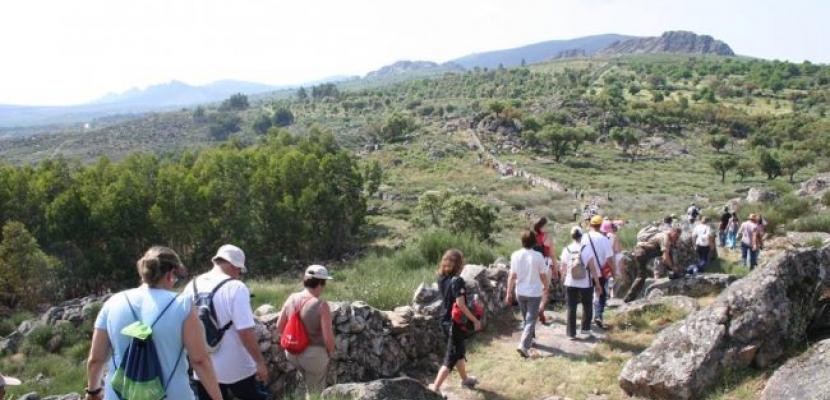Image

Route of the Coffee Smuggling
Published on 27 May 2021

Portugal
Alentejo
This is the good practice's implementation level. It can be national, regional or local.
About this good practice
During the dictatorship, the coffee produced in Portugal could not be sold in Spain and, therefore, it was decreed that any attempt to sell it there would be punished with prison sentences. For those who made their living from selling coffee, they found a way of smuggling it into the neighbouring country, escaping the close watch of the guards and carabinieri that patrolled the border.
From Marvão and the neighbouring villages, where at the time there were half a dozen roasting plants in activity, groups of brave men would set off at night in the direction of La Fontañera with sacks of raw coffee on their backs. From Spain, they brought money (lots of it) and all sorts of products that could be sold in the villages - cloth, porcelain and even Coca-Cola.
Time has passed and today what is known as the "Coffee Smuggling Trail" in the Alto Alentejo has become a tourist trail, organised by the Marvão City Council in May, with reenactments and testimonies from those who lived through these adventures.
Besides the historical aspect, this route also has a strong landscape and natural impact.
On a 13Km route, of irregular relief, the cork-oak cover is interrupted by granite outcrops and by still cultivated valleys. The route is made through winding paths and sometimes medieval cobblestone. The views to Marvão Castle are stunning. Part way along the trail we can see the escarpment of Penha da Esparoeira, which is home to colonies of griffon vultures.
From Marvão and the neighbouring villages, where at the time there were half a dozen roasting plants in activity, groups of brave men would set off at night in the direction of La Fontañera with sacks of raw coffee on their backs. From Spain, they brought money (lots of it) and all sorts of products that could be sold in the villages - cloth, porcelain and even Coca-Cola.
Time has passed and today what is known as the "Coffee Smuggling Trail" in the Alto Alentejo has become a tourist trail, organised by the Marvão City Council in May, with reenactments and testimonies from those who lived through these adventures.
Besides the historical aspect, this route also has a strong landscape and natural impact.
On a 13Km route, of irregular relief, the cork-oak cover is interrupted by granite outcrops and by still cultivated valleys. The route is made through winding paths and sometimes medieval cobblestone. The views to Marvão Castle are stunning. Part way along the trail we can see the escarpment of Penha da Esparoeira, which is home to colonies of griffon vultures.
Expert opinion
Mountain regions are hosting an invaluable natural and cultural heritage, however, their uniqueness also comes with multiple challenges such as depopulation and insufficient infrastructure. Thematic trails are a perfect solution for preserving, promoting and valorising the cultural heritage and for diverting tourist flows from the main, often overcrowded attractions and to promote less-known destinations and regions. The coffee smugglers trail is a very interesting approach for developing a new itinerary with an inspiring story that people would like to experience and provides at the same time the opportunity to enjoy nature, to visit other cultural monuments and to boost the local infrastructure that caters for the visitors. This approach can inspire other tourist destinations.
Works at
Interreg Europe Policy Learning Platform
Resources needed
The support of the stakeholders is essential. A very good communication and human resources support is also needed.
The investment of the route organised by Marvão City Council was around 2.000,00 € which, besides the walk, includes insurance, breakfast and reinforcement food for the participants.
The investment of the route organised by Marvão City Council was around 2.000,00 € which, besides the walk, includes insurance, breakfast and reinforcement food for the participants.
Evidence of success
The major evidence of success is the number of participants, in the year 2019, in the route organised by Marvão city council that was around 200 people participated and each year the interest increase. Additionally, the route was integrated in the tourism offer of Alentejo Feel Nature programme.
Potential for learning or transfer
The experience acquired within this project can be transfer to other regions and can be performed by public or private entities that want to preserve small facts of our history, highlighting them so that they are not forgotten and bring added value to our region opening a new tourism offer with a low budget.
This route is about exploring the land, breathing the fresh air, experiencing a piece of history that few people know about and, of course, enjoying the region and this is commum to several regions.
This route is about exploring the land, breathing the fresh air, experiencing a piece of history that few people know about and, of course, enjoying the region and this is commum to several regions.
Further information
Website
Good practice owner
You can contact the good practice owner below for more detailed information.
Organisation
Marvão Municipality

Portugal
Alentejo
Contact
Project manager
